Lucy Stulligross isn’t looking forward to a boring summer in Milforth, Ontario, without her best friend Katia, who is away at summer camp. All Lucy has are chores and her dad pressuring her to dress more “like the pretty girl you are” instead of in a t-shirt and cutoffs.
But her small town’s plan to revive an old carousel for its sesquicentennial brings in visiting artist Ray and her daughter, Anaïs. Anaïs isn’t as judgmental of Lucy as the “cool” girls in the neighborhood, and she and Lucy soon become friends. Lucy learns that Anaïs actually has two moms, who are divorced (“but they’re still friends”). Lucy, too, has a single parent; her mom left when she was a baby, and she lives with her father and her older brother Daniel.
When helping Ray work on a carousel horse one day, Lucy inquires about her lesbian identity. Ray, who has a “butch sense of style,” shares her coming out story, and asserts affirmingly, “I love being a lesbian. I love being queer. It makes me very happy, and I think everyone should be allowed to know that happiness is possible.” At the same time, she gives Lucy the space to think about her (Lucy’s) identity in her own time, although it’s clear Ray has a suspicion about why Lucy asked.
Indeed, Lucy’s relationship with Anaïs (who is bi) deepens into a sweet mutual crush, complete with an adorkable first kiss. Lucy isn’t sure what this means about her identity, but Anaïs, too, gives her time to discover this on her own.
As the girls’ relationship deepens, external pressures ramp up. Lucy’s dad is thinking about selling his small grocery store to a development company that hopes to build condominiums in town, expensive housing that not everyone in Milforth is happy about. But the family’s financial situation is tough, and her dad sees this as the only way to provide for his kids. When Lucy decides to cut her hair short one day, aided by Anaïs, this triggers her already-stressed dad into lashing out. He grounds her and forbids her from seeing Anaïs or Ray. Daniel is supportive of Lucy’s decision, though, and thinks their dad will come around.
Author/illustrator Kathleen Gros keeps the story from being a black-and-white one of “queer kid versus anti-queer parent.” We see how the dad’s worries about their family situation, his desire to protect Lucy from harm, and his fear about what people will think of him as a father came out as anger. Because it may be of use to adults evaluating the book, I’ll risk a spoiler and note that with a little help from Ray, the dad realizes this, too. It’s a nice redemptive arc that shows change is possible.
Lucy is still concerned about coming out to her dad and to Katia, who has been effusing in her letters about her crush on a boy at camp. But Lucy ultimately does so—and her newfound bravery also has a wider impact that I won’t spoil.
This recommended graphic novel is a thoughtful and occasionally hilarious tale of a first crush, coming out, and finding the courage to speak out for both oneself and one’s community. And it features several still-rare pieces of representation: a bisexual girl, a queer child of queer parents, a masculine-of-center mom, and a masculine-of-center girl. I’ll observe that while we’ve happily seen an increase in representation of nonbinary youth in middle grade stories, masculine-of-center girls/women remain uncommon—and we need both. “I just want to be a girl in my own way,” Lucy explains at one point. It’s nice to see two such characters here, with one a mentor to the other, showing yet another facet of the gender spectrum.
Lucy, Anaïs, and their families are White; some neighbors are people of color.








